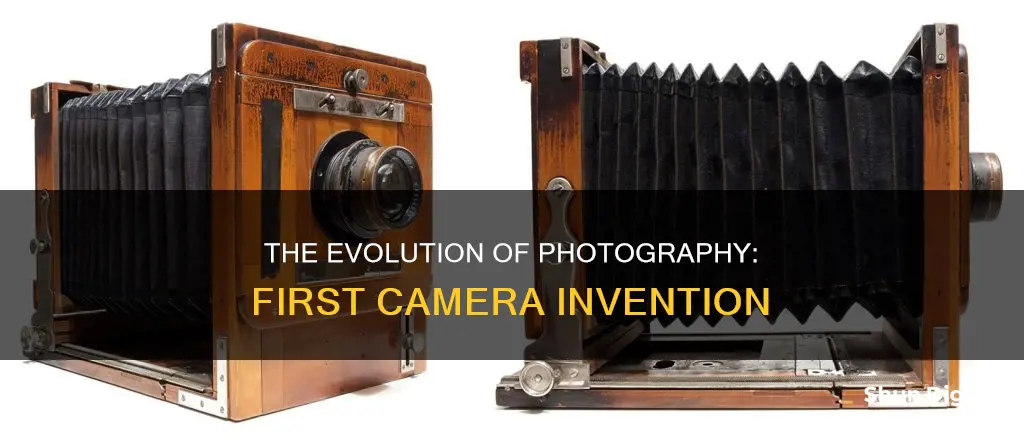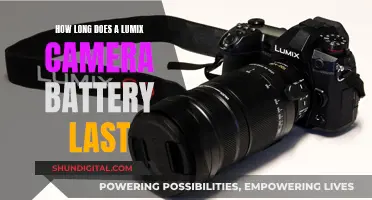
The history of the camera is a long and fascinating one, dating back centuries before the first photograph was ever taken. The concept of a camera began with the camera obscura, a dark room or box with a small hole that projected an inverted image of the outside onto the wall. The earliest written explanation of this phenomenon is attributed to Han Chinese philosopher Mozi around 470 to 391 BC, and it was further studied by the likes of Aristotle, Anthemius of Tralles, and Ibn Al-Haytham (Alhazen) in subsequent centuries.
The first device recognised as a camera was invented in 1816 by French inventor Joseph Nicéphore Niépce. He created the first permanent photograph in 1826 or 1827 using a camera obscura and a light-sensitive material called Bitumen of Judea or Asphalt of Syria. This process, which he called heliography, produced blurred but permanent images.
Following Niépce's death in 1833, his colleague Louis Daguerre continued his work and invented the first portable camera, the Daguerreotype, in 1839. This camera produced positive images, or mirror images, and required exposure times of several minutes or hours. Daguerreotypes became extremely popular, and the French government presented the technology as a gift to the world.
The first mass-marketed camera was also introduced in 1839 by Alphonse Giroux. It was a daguerreotype camera that used standardised plates and had an exposure time of 5 to 30 minutes. This camera cost around $7,000 in today's money and was the first to be accessible to a wider range of people.
The history of the camera has continued to evolve, with innovations in film, digital photography, and camera phones, leading to the compact and powerful cameras we have today.
| Characteristics | Values |
|---|---|
| Date of invention | 1816 |
| Inventor | Joseph Nicéphore Niépce |
| Type of camera | Camera obscura |
| Image type | Negative |
| Image permanence | No |
| Image material | Paper coated with silver chloride |
What You'll Learn

The first camera was invented in the 19th century
The first camera, created by French inventor Joseph Nicéphore Niépce in 1816, used paper coated with silver chloride to produce a negative image (dark where it should be light). However, these images were not permanent due to the nature of silver chloride. Niépce then experimented with a range of other substances, eventually discovering that a "film" made from "Bitumen of Judea" mixed with pewter could produce permanent photographic images. He called this process "heliography", and the first photograph was taken in 1826 or 1827, capturing the view from his window.
Following Niépce's death in 1833, his colleague Louis Daguerre continued his work, eventually producing the first portable camera in 1839. Daguerre produced a box camera called the Daguerreotype, which used a plate coated with a thin film of silver iodide exposed to light for several minutes or hours. The image was then treated with mercury vapour and hot saltwater to remove the silver iodide, leaving a permanent image. Daguerreotypes produced images in reverse, or mirror image, and while they were extremely popular, they were an expensive process and could only create a single image.
In the same year, 1839, Englishman William Henry Fox Talbot unveiled his camera, the Calotype, to the Royal Institute in London. Talbot's camera used a different chemical process, starting with a sheet of writing paper treated with silver nitrate and coated in potassium iodide. The paper was then exposed to the image through a box camera for a few minutes before being washed with a new layer of silver nitrate to fix the image. While the Calotype camera had a slower exposure time than the Daguerreotype, it produced negative images, and Talbot soon developed the first print from a negative film.
The first mass-marketed camera was the Daguerreotype camera produced by Alphonse Giroux in 1839, costing 400 francs (approximately $7,000 today). This camera had an exposure time of 5 to 30 minutes, and standardised plates could be purchased in a range of sizes.
The history of the camera has come a long way since these early inventions, with continuous improvements in image quality, exposure time, portability, and accessibility. The journey from the first cameras to modern global DSLR cameras has been a fascinating one, with each innovation building on the last to bring us the technology we know today.
Samsung S8 Camera Mode Button: What's It For?
You may want to see also

The first camera was a camera obscura
The camera obscura was used as early as the 5th century BC and was described by the Han Chinese philosopher Mozi (c. 470 to c. 391 BC). Aristotle also observed the phenomenon in the 4th century BC, noting how sunlight travelling through the spaces between leaves projects a picture of an overshadowed sun on the ground.
By the 16th century, camera obscuras with lenses were being used to study eclipses and as drawing aids. Artists like Canaletto and Rembrandt used the camera obscura to make accurate, detailed sketches of scenes. The images produced, however, could only be preserved by manually tracing them.
In the late 17th century, portable camera obscuras in tents and boxes became popular drawing tools. In the 18th and 19th centuries, the camera obscura was a useful accessory for wealthy individuals on the 'Grand Tour' to make drawings of Italian landscapes and classical ruins.
The next significant development was the combination of a camera obscura with light-sensitive materials to capture and preserve the projected image. In 1826 or 1827, Joseph Nicéphore Niépce used a camera obscura and a plate coated with chemicals to create the earliest known photograph, 'View from the Window at Le Gras'.
Iron Cameras: Myth or Reality?
You may want to see also

The first permanent photograph was taken in 1826
Niépce's pioneering achievement marked a significant milestone in the history of photography. He had been experimenting with photography since 1816, fascinated by the newly invented art of lithography that swept France in 1813. By 1824, he had some success in copying engravings, and in 1826, he was ready to capture the world's first permanent photograph.
The process involved an exposure time of around eight hours or even several days, during which sunlight hardened the bitumen on the plate in areas exposed to light. The unhardened bitumen was then dissolved using a mixture of oil of lavender and white petroleum, revealing the latent image. This technique, which Niépce called "heliography" or "sun writing," produced a permanent and unique photograph.
The original photograph is now exhibited at the University of Texas at Austin, and Niépce is recognized as the world's first photographer. His invention laid the foundation for the art of photography, which has since revolutionized the way we capture and view the world around us.
Best Camera for Nighttime Portrait Mode on the Galaxy S22
You may want to see also

The first camera was invented by Joseph Nicéphore Niépce
Niépce's interest in photography was sparked by his fascination with lithography, which became a craze in France in 1813. He was also intrigued by the camera obscura, a popular optical instrument at the time. In 1816, Niépce began experimenting with ways to capture the images produced by the camera obscura. He initially worked with paper coated with silver chloride, but the results were negatives that would eventually darken completely when exposed to light.
Niépce then turned his attention to other light-sensitive substances, eventually focusing on Bitumen of Judea, a naturally occurring asphalt with various artistic and industrial applications. By coating a surface with Bitumen and exposing it to light, Niépce found that the substance became less soluble in certain areas, allowing him to create a permanent image.
In 1826 or 1827, Niépce successfully adapted the camera obscura to generate a photographic plate. He placed a pewter plate coated with Bitumen of Judea inside a camera obscura and exposed it to light for several days, creating the world's first photograph. This photograph, taken from the window of his estate in France, is now on display at the University of Texas in Austin.
While Niépce is credited with inventing the first camera, his images lacked clarity and depth, and his process required extremely long exposure times. However, his work laid the foundation for future advancements in photography, and he is rightfully recognized as the world's first photographer.
Best Cameras Compatible with the AZ16-1 Battery
You may want to see also

The first camera was a simple box
The box camera was a simple device, a sealed rectangular box made of two metal parts, with a single-element meniscus fixed-focus lens on the front and a loading knob on the side. It had no shutter mechanism, and the photographer had to remove a lens cap to expose the photo. Despite its simplicity, this prototype laid the foundation for the future of photography.
The first box camera to hit the market in France around 1870 lacked a shutter mechanism, but it was a significant milestone. Kodak, led by George Eastman, developed the first commercial models, making box cameras more accessible to the public.
The introduction of roll-format film by Kodak in the 1880s further enhanced the usability of box cameras. The Kodak camera, introduced in 1888, became the first box camera widely adopted by the public, with its design setting the standard for future box camera manufacturers. This camera used flexible roll film, making it lightweight and portable, and it came pre-loaded with film, which customers returned to Kodak for processing and reloading.
The success of the Kodak camera and its successors, such as the Brownie series, democratized photography and brought it into people's homes. The box camera's simplicity and affordability made it the perfect tool for capturing everyday moments, leading to the term "snapshot."
While box cameras evolved over time, adding features like photographic flash, shutter, and aperture adjustments, their legacy lies in making photography accessible to everyone, paving the way for the rich history of camera technology that followed.
Trail Camera Power: Battery or Solar?
You may want to see also
Frequently asked questions
The first device we recognise as a camera was invented in 1816 by French inventor Joseph Nicéphore Niépce.
The first camera was called the heliograph, which translates to "sun drawing".
The first camera was invented by Joseph Nicéphore Niépce.







